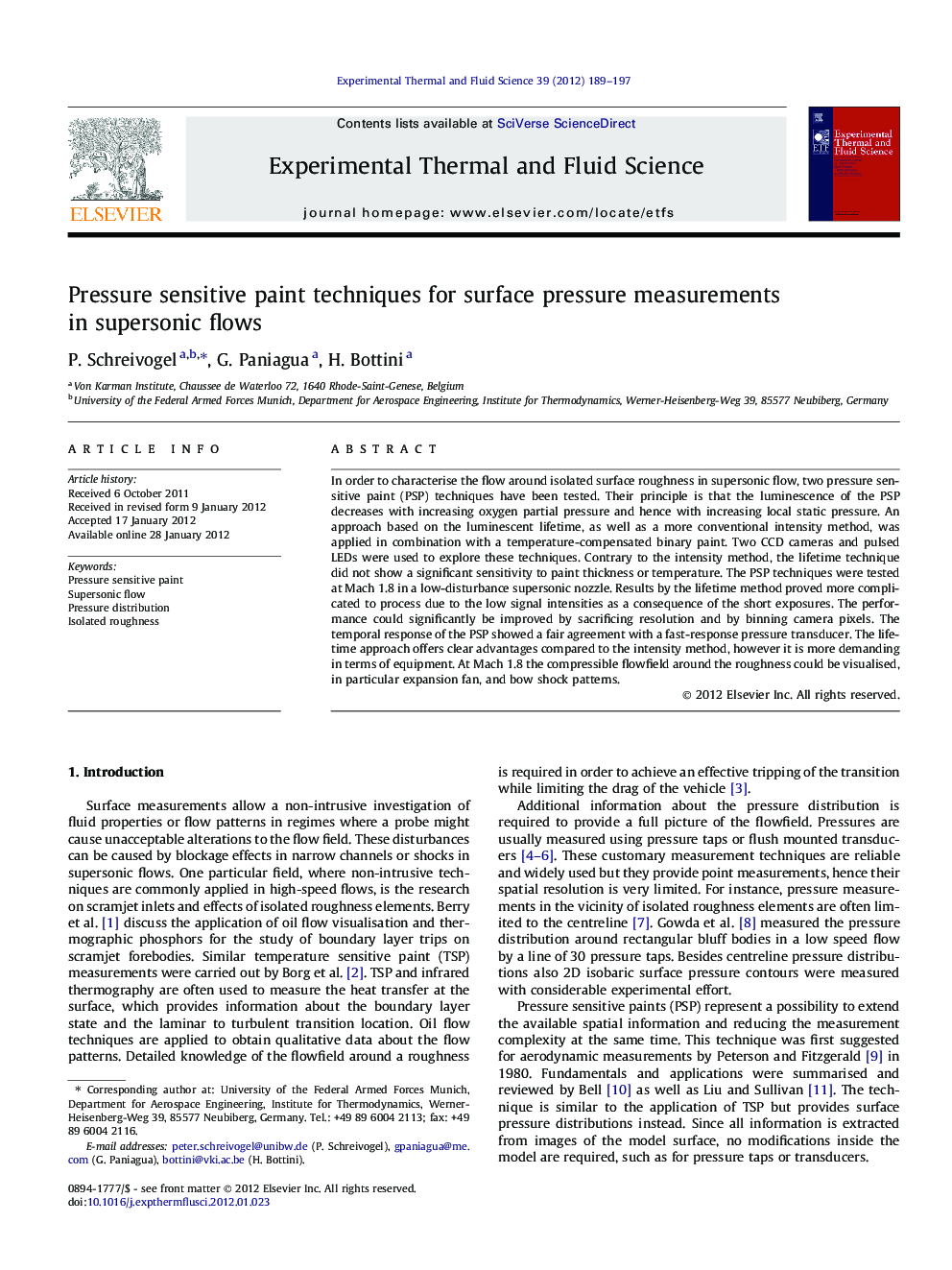| Article ID | Journal | Published Year | Pages | File Type |
|---|---|---|---|---|
| 651813 | Experimental Thermal and Fluid Science | 2012 | 9 Pages |
In order to characterise the flow around isolated surface roughness in supersonic flow, two pressure sensitive paint (PSP) techniques have been tested. Their principle is that the luminescence of the PSP decreases with increasing oxygen partial pressure and hence with increasing local static pressure. An approach based on the luminescent lifetime, as well as a more conventional intensity method, was applied in combination with a temperature-compensated binary paint. Two CCD cameras and pulsed LEDs were used to explore these techniques. Contrary to the intensity method, the lifetime technique did not show a significant sensitivity to paint thickness or temperature. The PSP techniques were tested at Mach 1.8 in a low-disturbance supersonic nozzle. Results by the lifetime method proved more complicated to process due to the low signal intensities as a consequence of the short exposures. The performance could significantly be improved by sacrificing resolution and by binning camera pixels. The temporal response of the PSP showed a fair agreement with a fast-response pressure transducer. The lifetime approach offers clear advantages compared to the intensity method, however it is more demanding in terms of equipment. At Mach 1.8 the compressible flowfield around the roughness could be visualised, in particular expansion fan, and bow shock patterns.
► The intensity and lifetime pressure sensitive paint techniques are compared. ► Temperature and paint thickness effects are characterised. ► The techniques are applied in a supersonic blowdown wind tunnel. ► The pressure distribution around an isolated roughness is measured. ► The lifetime technique improves the temporal response and temperature sensitivity.
